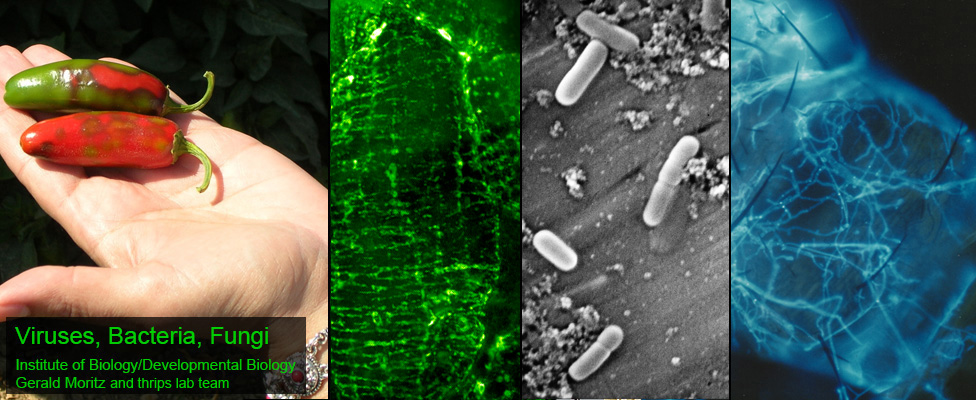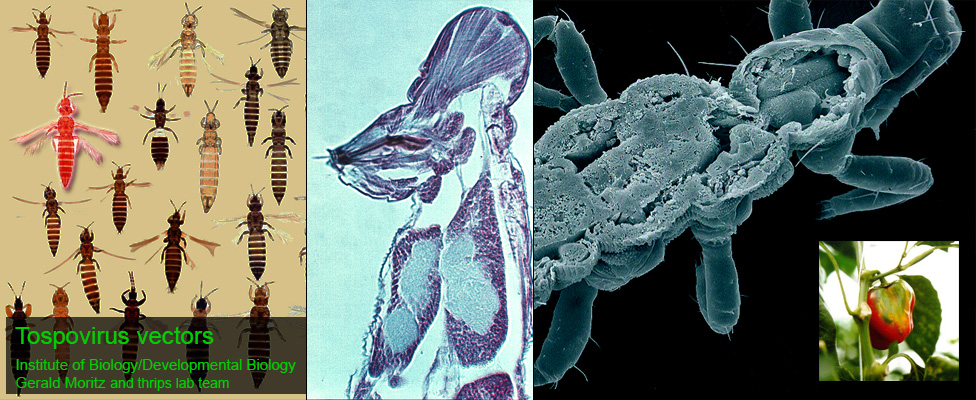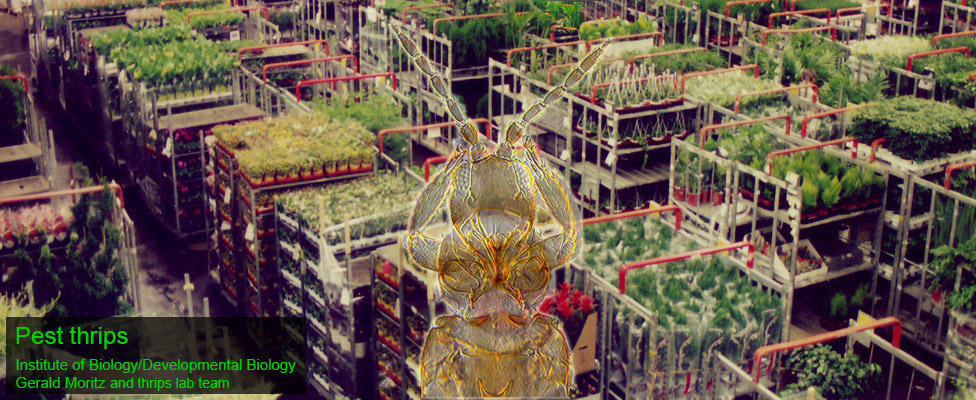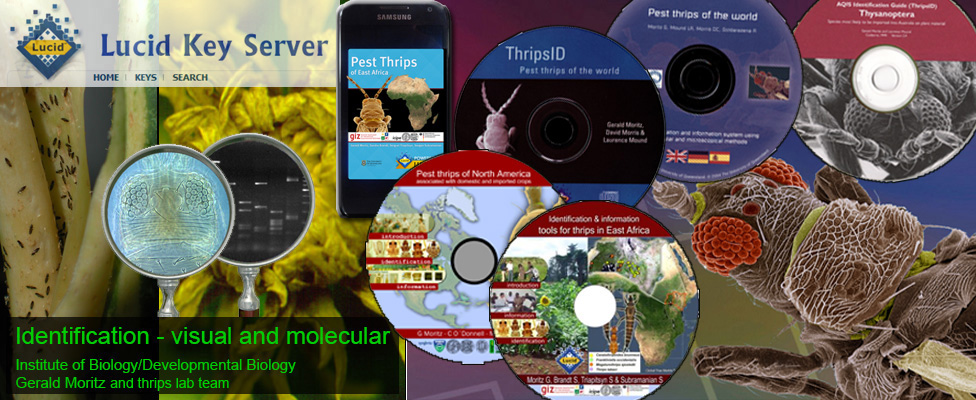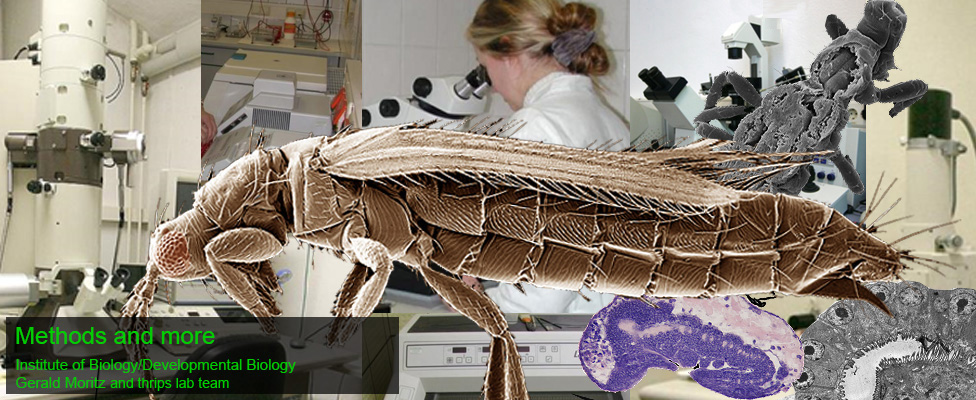Thrips – tiny little insects with incredible biology
Almost 6200 insect species belong to the order Thysanoptera (Thrips, thunder flies). The corporate design can be shown at many features, what leads to a very similar look and ends often in a difficult identication. The coloration is very monotonous of bright, pale yellow to brown till black colors. Most species have fringed wings, all show asymmetric piercing-and sucking mouthparts and all have a tiny and slim shape. The ontogenetic stages (larval and pupal instars) already resemble strongly on adults, although the interesting metamorphosis is described as holometamorph. All organs become successively under deconstruction, reorganization and new construction. The mouthparts are predestined by common tube systems of the cibarium and salivarium for feeding as well as of salivary gland secretions via salivarium pump and the laciniae. The left mandible ending blindly and has the function of a pickaxe to destroy the tissue surface for dippig the functional unified stylets into the wound. Besides the direct feeding damage a few thrips species are the only known vectors of tospoviruses (Bunyaviridae), which can extremely increase the pest potential. Furthermore, a few thrips species, like Frankliniella occidentalis, can reach high insecticide resistances by detoxification of the target substances of actually used insecticides. Fast and accurate identification of the harming pathogenes is important for effective steps of integrated pest management strategies. Modern, interactive visual keys are available and can give lot´s of necessary informations for the biology of pest thrips species. For the determination of the pre-adult instars an ITS-RFLP analysis, following by DNA fragment comparison is available at these websites (https://moritz.zoologie.uni-halle.de/).




